This is the question many artists ask themselves. I have thought about this a great deal, having entered quite a few juried shows during my 30-year painting career, and here is my analysis of the seven characteristics of an award-winning juried show painting:
•
–Intentionality: the artist’s intentions are clear and have been fulfilled—it looks like you knew what you wanted to do and did it with passion
–Universality: the image has universal appeal and is something we all can relate to; it should not require too much “decipherment” or be so personal we can't figure it out
–Execution: the painting shows a mastery of technique, whether it be abstract or realistic, tight or loose; the artist has confidence in the handling of materials
–Conciseness: the painting tells one story, poignantly, without unnecessary components
–Composition: a good underlying abstract design exists, the composition is balanced with no glaring mistakes in design
–Creativity: the subject is not hackneyed, and if common, an uncommon viewpoint or treatment has been selected; the artist is getting us to look at things in a new way
Timelessness: the painting's subject matter would intrigue us at any time in history--it makes us stop and think about life and the universe
Here are some paintings that won awards in the BWS Mid-Atlantic Exhibition juried by Jean Uhl Spicer last spring 2010. What do you think? Do they meet some of the criteria mentioned above?:
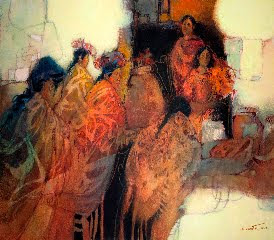
The Maya of Chichicastenango by Jan Ledbetter, Silver Medal

Stuck at the Top by Susan Stuller, Bronze Medal
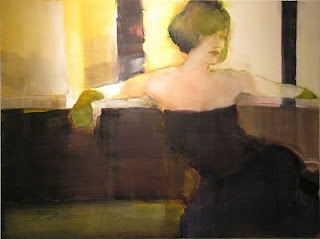
Green Gloves by Jeannie McGuire, $250 award
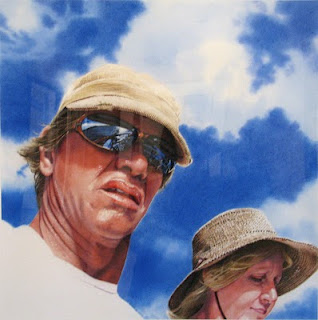
Voyage by Denny Bond, $133 award
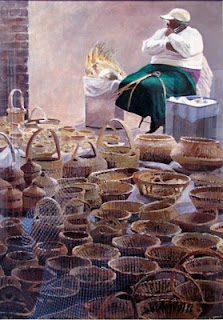
Charleston Market by Patricia Herlihy, $100 award

Between Us by Nancy Stark, $200 award
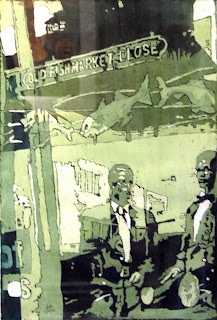
Old Fishmarket Close by Dale Sheldon, $133 award
Here is what some juror's have said they were looking for in selecting the pieces for the show:
Here at ARThouse, I am currently teaching a course called "Art Professionalism and Independant Study". We are looking at questions like this with the aim of developing artwork that is professional and likely to succeed in the highly competitive art world. Juried shows serve a very important role in the art world: they help "raise the bar" on quality and inspire artists to do their very best work.
What do you think are the most important characteristics of a good juried show painting? What have I missed?
Susan Murphy, ARThouse, September 20, 2010
Timelessness: the painting's subject matter would intrigue us at any time in history--it makes us stop and think about life and the universe
Here are some paintings that won awards in the BWS Mid-Atlantic Exhibition juried by Jean Uhl Spicer last spring 2010. What do you think? Do they meet some of the criteria mentioned above?:

The Maya of Chichicastenango by Jan Ledbetter, Silver Medal

Stuck at the Top by Susan Stuller, Bronze Medal
Green Gloves by Jeannie McGuire, $250 award
Voyage by Denny Bond, $133 award
Charleston Market by Patricia Herlihy, $100 award
Between Us by Nancy Stark, $200 award
Old Fishmarket Close by Dale Sheldon, $133 award
Here is what some juror's have said they were looking for in selecting the pieces for the show:
•“In choosing the paintings for the exhibition, I have kept three things in mind: exciting design, paint quality and strong values.” Frank Francese, juror of Baltimore Watercolor Society 2009 Mid-Atlantic show
•“My challenge was to select those paintings that best conveyed creative approaches and displayed a personal concept regardless of technical ability. I also rely on the emotional resonse I feel at first look.” Jean Uhl Spicer, juror of 2010 Baltimore Watercolor Society Mid-Atlantic show.
•“I looked for paintings that exhibited a very personal connection between the artist and the work”. Carl Purcell, juror 2009 National Watercolor Society show
•“I responded to those works that made me think or see in a new way. Interpretation, a personal vision, strength of design, content, and authority in the use of materials were important as I made my choices.” Carol Pickle, juror of Adirondack National 2010 Exhibition of American Watercolor
•“Before looking at any work, I decided on a further criterion for awards: I would reward original thinking—artists who took risks and pushed their media beyond traditional standards of execution.” Michaele Harrington, juror for awards of Kensington, MD “Paint the Town”, 2010
Here at ARThouse, I am currently teaching a course called "Art Professionalism and Independant Study". We are looking at questions like this with the aim of developing artwork that is professional and likely to succeed in the highly competitive art world. Juried shows serve a very important role in the art world: they help "raise the bar" on quality and inspire artists to do their very best work.
What do you think are the most important characteristics of a good juried show painting? What have I missed?
Susan Murphy, ARThouse, September 20, 2010

